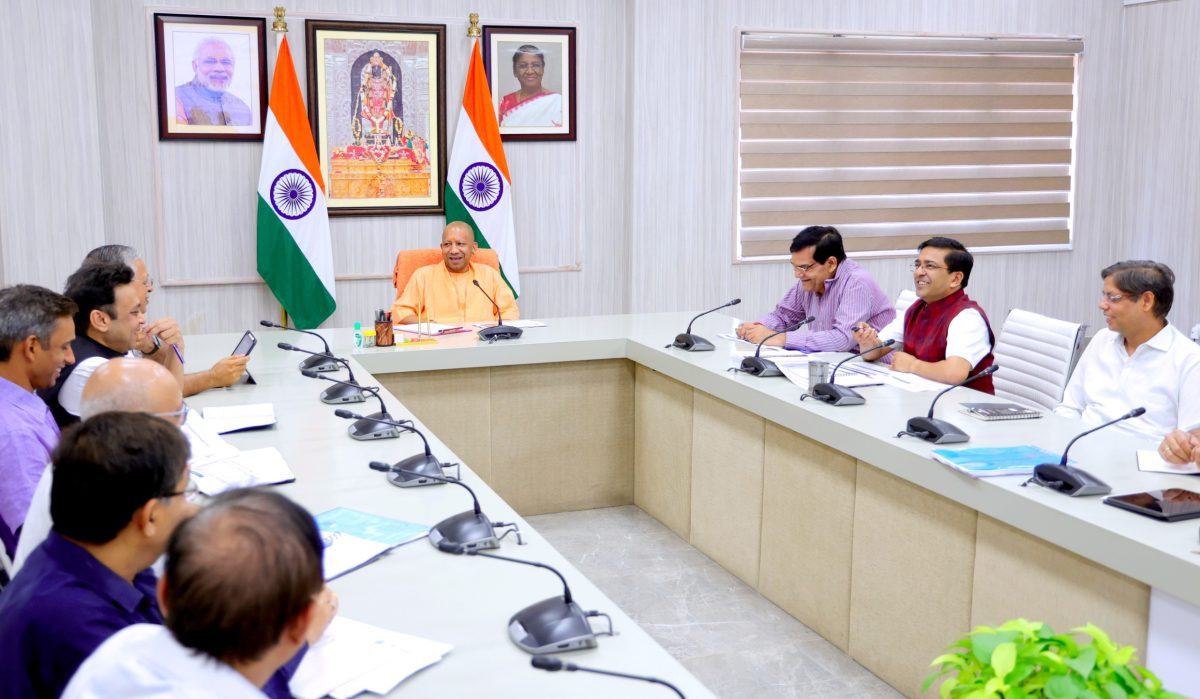
Lucknow, June 22 (HS). As per the vision of the double engine government, the development work of 'Mission Amrit Sarovar' is going on at a fast pace. Under the leadership of Yogi Adityanath, Uttar Pradesh has completed 80 percent of its target. Amrit Sarovar has been developed at 70158 places in the country so far. Uttar Pradesh is on top in this.
According to the Amrit Sarovar Development Report in Uttar Pradesh, Ghaziabad is on top. Chief Minister Yogi Adityanath's home district Gorakhpur is also included in the top-5.
Uttar Pradesh tops in developing Amrit Sarovar
The spokesperson of the state government said that Uttar Pradesh is leading in developing Amrit Sarovar under the leadership of Chief Minister Yogi Adityanath. Amrit Sarovar work has been completed at a total of 70158 places in the country. 24774 places were identified for Amrit Sarovar construction in Uttar Pradesh. Out of this, work is going on at 21014. Work has been completed at 16909 places. Which is about 80 percent. Madhya Pradesh is in second place. Here 5821 works have been completed. Under the Amrit Sarovar Yojana, work on 4058 sarovars has been completed in Karnataka and 3138 sarovars in Rajasthan. While this figure is 3079 in Maharashtra.
Ghaziabad is on top, CM's Gorakhpur is also in top 5
The work of Amrit Sarovar development is going on at a very fast pace in Uttar Pradesh. Out of 57691 Gram Panchayats, the work of Amrit Sarovar has been completed in 16909. That is, Uttar Pradesh had set a target of about 30 percent, out of which 24.1 percent targets have been achieved. If we look at the districts of Uttar Pradesh, Ghaziabad is on top. Here, out of 142 Gram Panchayats, the work of Amrit Sarovar (70 percent) has been completed in 100.
Out of 882 Gram Panchayats, 601 Amrit Sarovars were developed in Maharajganj. Maharajganj achieved 68 percent of the target. Banda is in third place. Whereas in the Chief Minister's home district Gorakhpur, work of 737 Amrit Sarovars was completed out of 1273 Gram Panchayats. Gorakhpur is in fourth place by achieving 58 percent of the target. Noida is in fifth place, Rampur in sixth, Chitrakoot in seventh, Baghpat in eighth, Mau in ninth and Sonbhadra in tenth place.
Warning to districts working at slow pace
The progress of some districts in developing Amrit Sarovar is slow. CM Yogi has also warned them to work faster. The districts where the pace of work is slow include Deoria, Basti, Ambedkarnagar, Sambhal, Agra, Badaun, Bahraich, Moradabad, Hathras and Bareilly. 18 to 22 percent work has been done in these districts too. Instructions have been given to speed it up.
Yogi government's emphasis on rain water harvesting
The Yogi government, while emphasizing on rain water harvesting, said that the catchment area of water structures and Amrit Sarovar should be developed and restored, so that the availability of water in Amrit Sarovar and water structures remains intact. Rain water can be harvested and for water harvesting, action should be taken as per the rules in accordance with the prescribed provisions under the MNREGA scheme or by doing convergence between State Finance / 15th Finance.
Instructions to ensure catchment improvement
At the same time, instructions were given to ensure catchment improvement of Amrit Sarovar, so that sufficient amount of rainwater can reach Amrit Sarovar. Provision of filtering chamber should be ensured so that dirty water of the village does not go into Amrit Sarovar. Surface-wise compaction should be ensured in the construction of embankments around the pond, so that the embankments are not eroded. Appropriate action will be taken under the scheme for the restoration of ponds in which silt etc. has accumulated, this will ensure maximum water storage during the rainy season. Instructions have been given to make arrangements for adequate water in Amrit Sarovar by coordinating with the Irrigation Department, Minor Irrigation Department and other departments through tube wells and canals in the Gram Panchayats.
 look news india
look news india